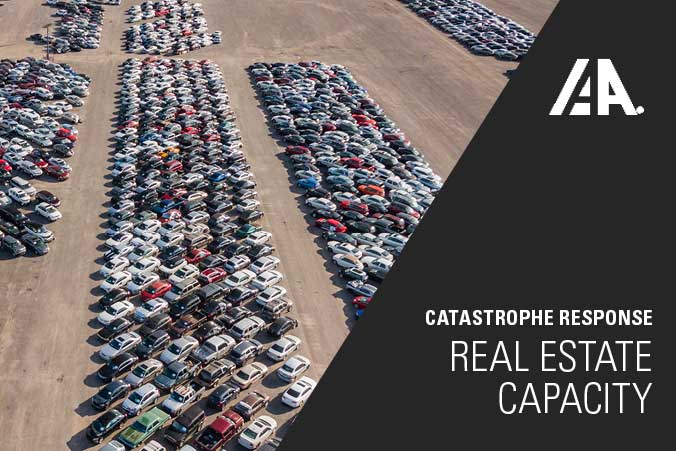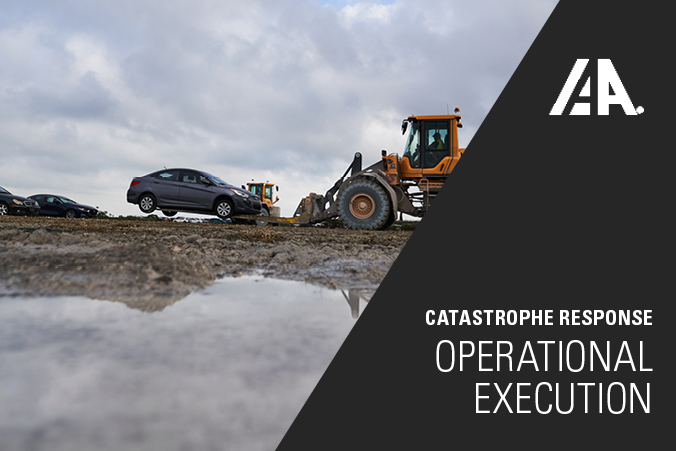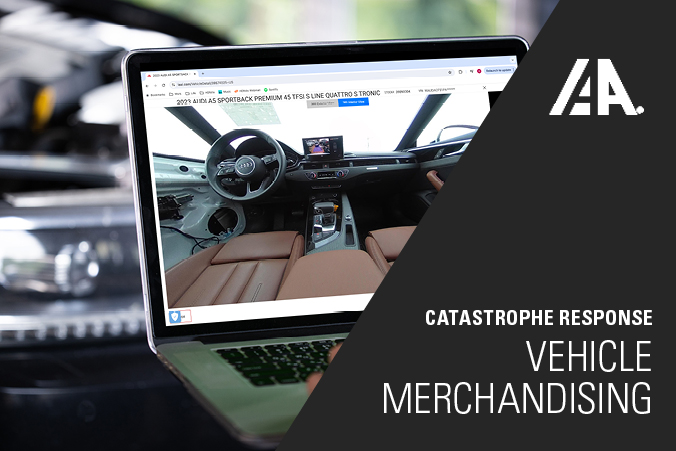Catastrophe Response
IAA's Catastrophe Response Strategy Brief: Operational Execution
Published July 9, 2020 - Written by IAA, Inc.
6 Min read
Summary
IAA looks at their operational execution, one of the key components that make up our catastrophe response strategy.
This brief was updated on July 7, 2022
Overview
Every weather catastrophe is dynamic and different. Timing, intensity, landfall location and population are just a few factors that determine the overall result of a catastrophe. Because weather events, such as hurricanes, have many constantly shifting variables, any response process has to be proactive yet flexible to ensure a timely and appropriate response.
IAA’s Catastrophe Response Strategy provides an unmatched level of service to our customers in their greatest time of need. Over the last 40 years, IAA has invested significant research and resources in developing its industry-leading catastrophe response discipline. It comprises four key areas: Real Estate Capacity, Operational Execution, Transportation Logistics and Vehicle Merchandising. We employ a continuous improvement methodology to ensure our Catastrophe Response Strategy remains superior in the market.
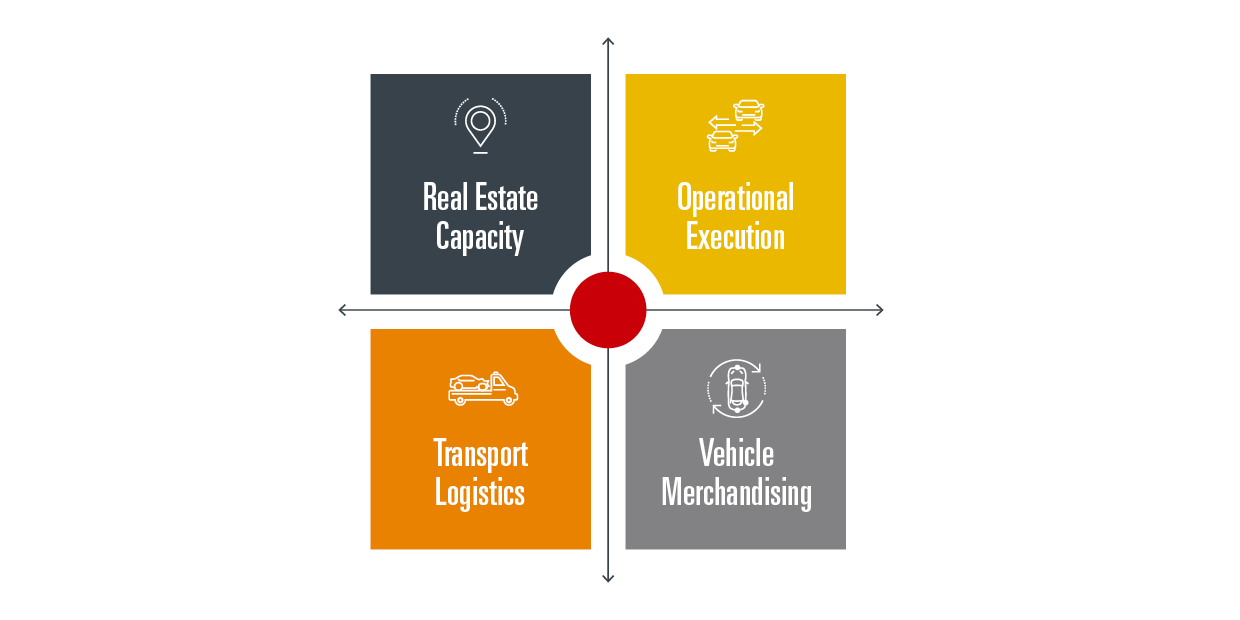
Operational Execution
Catastrophic weather events present complex, unpredictable challenges that can have dramatic last-minute implications on where and how operations ultimately take place. Getting the right levels of personnel and equipment delivered to the right locations at the right times, under constantly changing conditions, is crucial.It requires considerable planning and resources.
In alignment with nearly all catastrophe response disciplines, IAA’s Operational Execution strategy rests on a team-centric approach, leveraging five key elements: preparation and teamwork; partnership and prediction; procurement; yard organization; and client support and communication. To ensure a strong, safe and efficient catastrophe response, IAA assembles a highly trained and prepared team whose sole focus is on catastrophe operations, and arms them with industry-leading planning tools, weather and logistical data and state of the art equipment. The result is a catastrophe management discipline that is unmatched in the industry and has a long history of exceeding our customers’ expectations.

Preparation & Teamwork
Preparation and a culture of teamwork are essential to IAA’s industry-leading Catastrophe Response Strategy. Every year IAA vets hundreds of volunteers to confirm we have the best people to help in a catastrophic event. The “people” element makes the difference in our Response Strategy. Each member of the team is committed to, and excels at, helping our customers during catastrophic events.
Our dedicated Catastrophe Team is comprised of approximately 80 first responder members and an additional 125+Flex Team members if needed. Volunteers must apply annually to be a member of the Dedicated or Flex Team. The application process supports and maintains team members training and performance during the year. In addition to the application process, each volunteer’s supervisor must confirm with the Catastrophe Team Manager and sign off on their participation to ensure quality candidates.
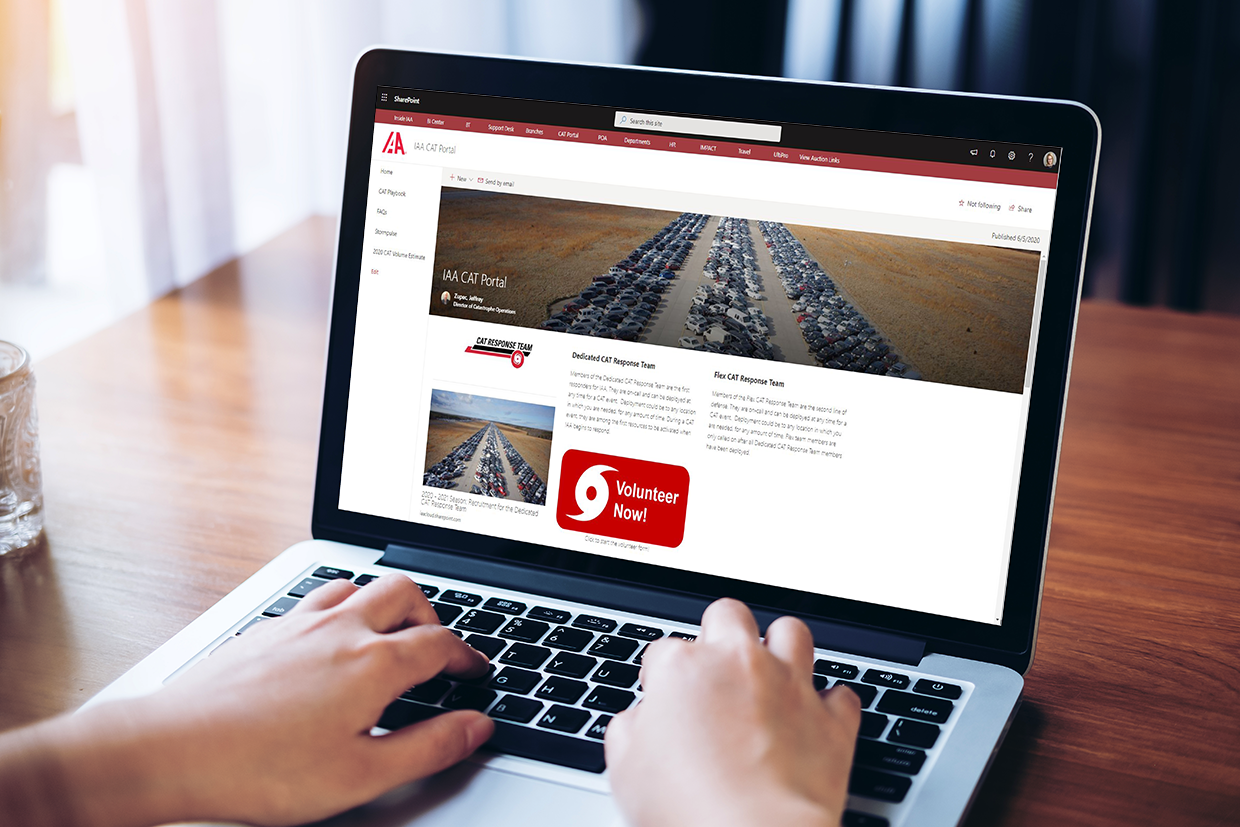
Throughout the year, Dedicated and Flex Team members are engaged in continuous communication and education via our CAT Portal. The Portal is used to communicate with team members should a weather event be forecasted, and provides team members with resources, travel and lodging details, and schedules before and during an active catastrophe event. During the severe weather off-season, IAA continues to train and educate leveraging the CAT portal.
To deliver consistent catastrophe preparation, the team also conducts simulated events and exercises, typically from late winter to early spring, to practice likely scenarios and ensure that everyone is ready to engage at a moment’s notice during peak season. We model prior severe weather events to create and practice potential scenarios. Based on the severity of the weather event, IAA utilizes data models to predict the size of the event, the number of losses based on insured vehicles in the area, and related details. These dry runs are crucial to improving response times and streamlining resources and equipment procurement.
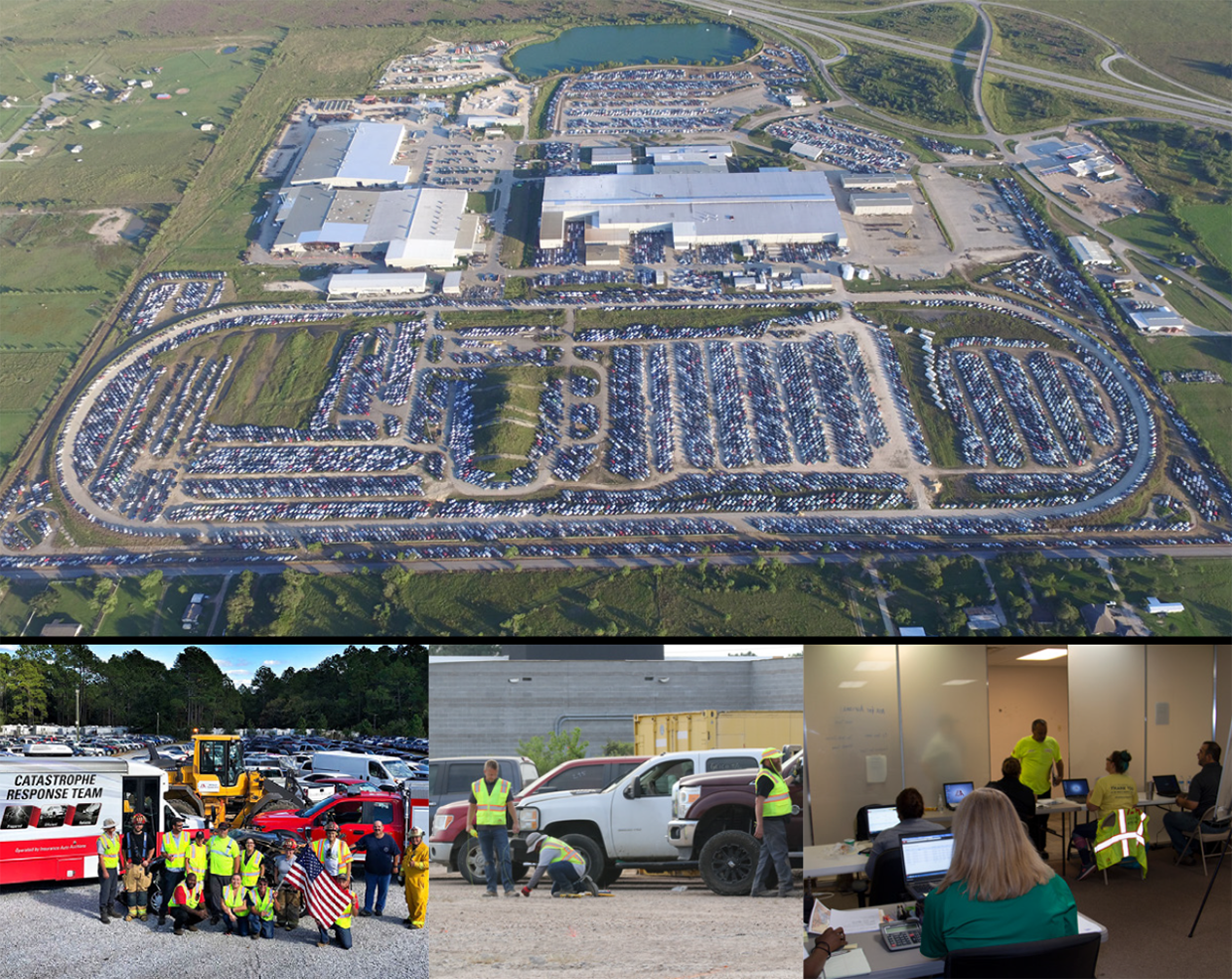
Partnership & Prediction
The second key operational element to IAA’s successful Catastrophe Response is partnerships with insurance providers, and state and local emergency management agencies. For 40 years, IAA has focused on creating consistent communication and collaboration with federal, state and local level emergency management agencies. This effort has resulted in IAA’s active participation as a first responder in state catastrophe conferences each year. In addition, relationships with emergency management agencies provide IAA with critical information during a catastrophic weather event including road closures that enable us to operate efficiently.
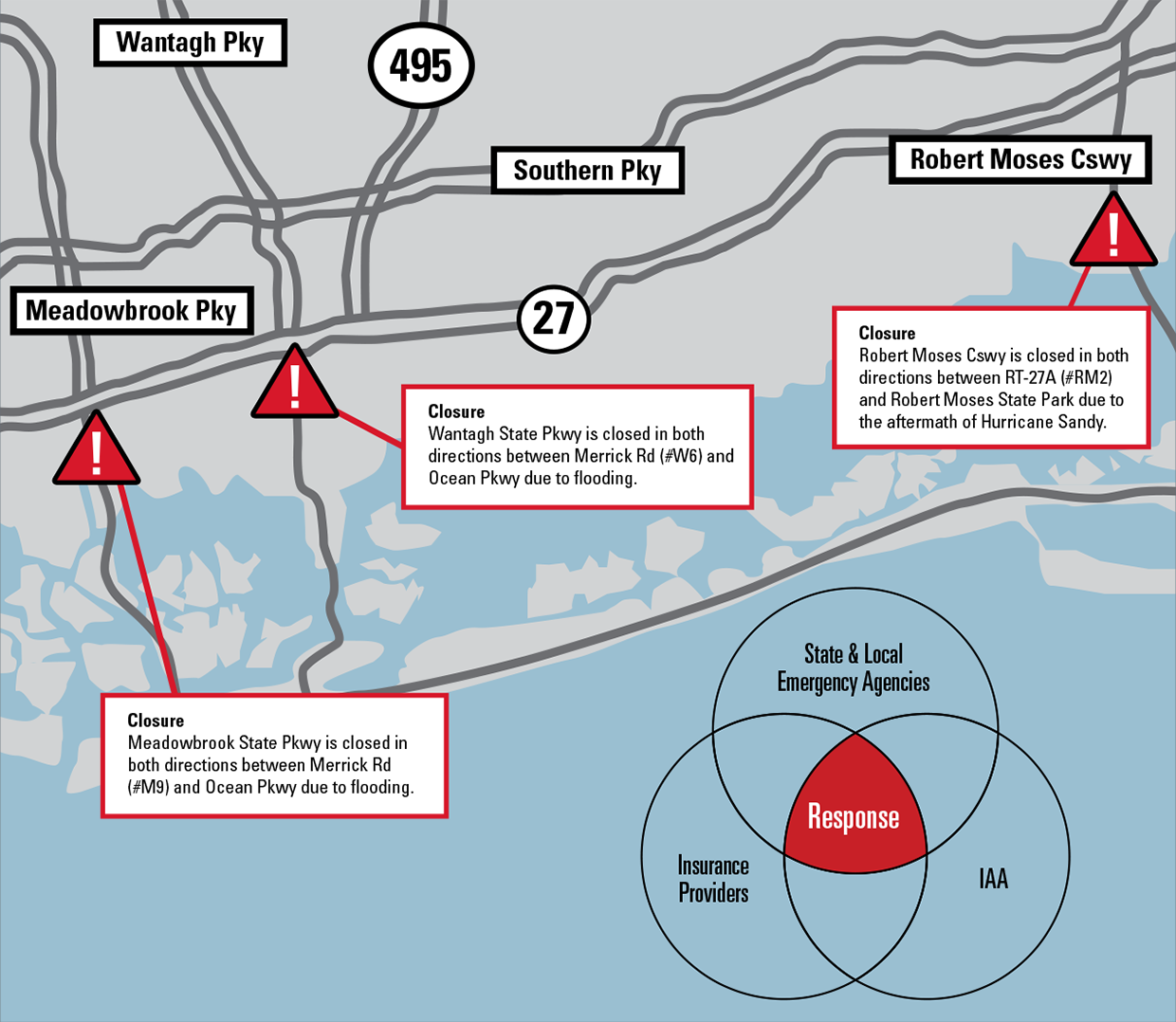
During severe weather season, our Catastrophe Operations Team closely monitors all weather-related activity in the Atlantic, Pacific, Gulf of Mexico and Caribbean. We monitor weather forecasts, models and potential impact zones as storms move across the globe. IAA utilizes nearly 10 forecast services to monitor weather movement. Each day a weather activity report is generated and reviewed to determine if or when to activate IAA’s Catastrophe Response Strategy. We monitor specific categories of weather events, including hurricanes, significant rainfall/floods, tornadoes, hailstorms, blizzards and earthquakes.

Procurement
In addition to people preparation, IAA works to procure, maintain and deliver the equipment required for operational execution. Each offseason, IAA invests in updating hardware, software and equipment to be prepared and available to service catastrophe sites. We recently updated our state-of-the-art command centers and mobile trailer fleet that allow us to deploy operation center assets where needed in the U.S.
IAA branches located within 100 miles of catastrophe-prone areas securely house catastrophe equipment, devices and PPE. Stored devices include handhelds, laptops, printers, and tablets. This equipment is stored in rooms designed to protect and power all devices, and ensure up to date device software. Equipment, including loaders, lights, etc., designated for Catastrophe Operations are located within 100 miles of areas prone to severe weather.
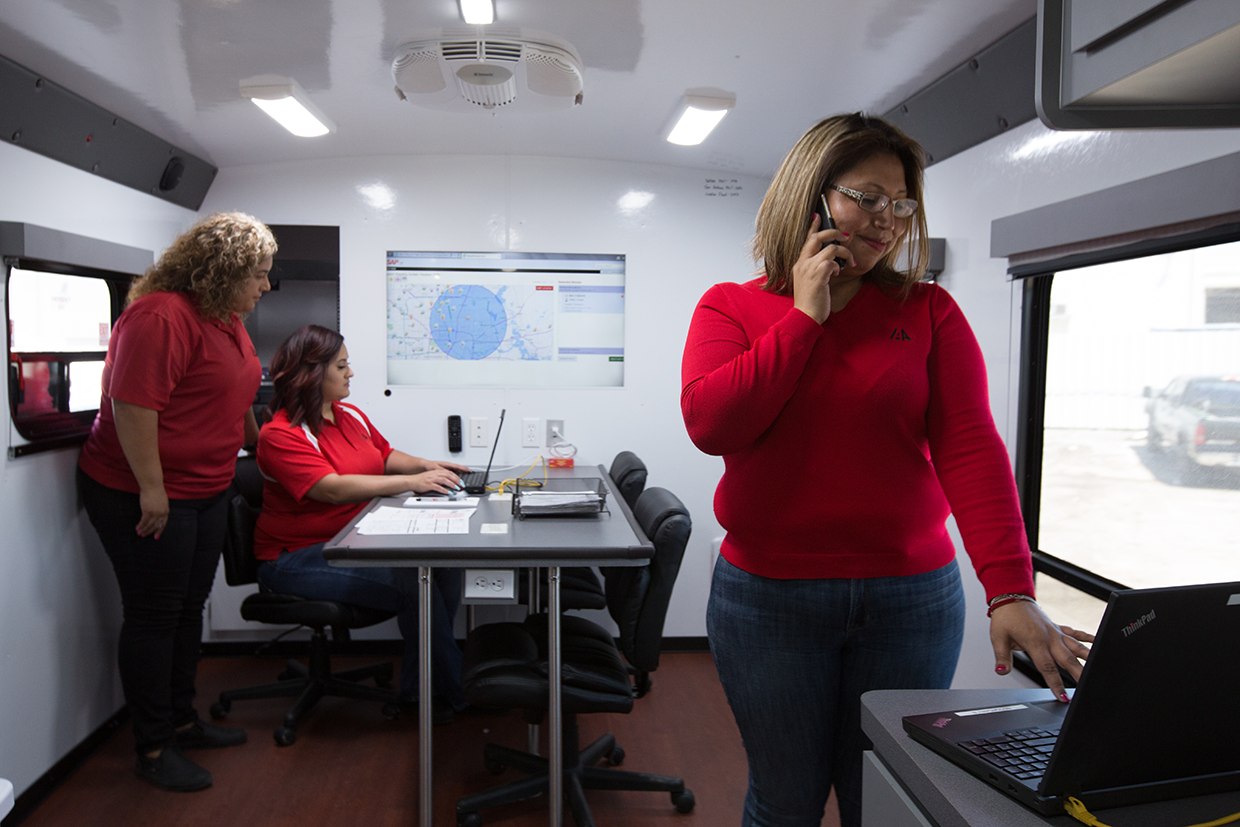
Our Catastrophe Team includes a dedicated procurement resource who sources and secures any needed additional equipment ahead of a storm when landfall is likely. This enables the team to have all necessary equipment on location.
Yard Management & Organization
Catastrophe Operations in full flight operate up to 24 hours each day, seven days per week, depending on size and severity of the event. IAA utilizes a labor-management discipline to ensure appropriate staffing across catastrophe operations. There is an established Catastrophe Operations Center housed at an IAA Branch location that acts as the hub of all activity and connects all additional storage locations. Hired security provides around the clock surveillance of assets, allowing transportation operations to operate 24-7.
IAA takes a customer-focused, smart approach to organizing its branches and storage yards during catastrophe events. The key goals are to ensure well-planned yard flow and accessible vehicle inventory. IAA leverages its branch inventory organization model in catastrophe storage yards. This translates to catastrophe storage facilities having easy entry and exit designs, locations near highways, safety for appraisers/adjusters, and vehicle organization that is in alignment with customer needs.

The location of yards, the organization of vehicles, and the accessibility to customer assets is critical to provide an efficient response process. Storage yards need to be close to the actual event to minimize the time required to transport vehicles, and to decrease travel time incurred by/spent by adjusters and appraisers. Part of IAA’s strategy is to organize storage yards by seller-customer to reduce the need for insurance staff to search through vast, unorganized locations for their vehicle units. IAA uses their standard vehicle storage structure and spacing within catastrophe storage yards to ensure adjusters can perform their duties safely and efficiently.
IAA has a fleet of mobile catastrophe trailers that act as the hub of operations for remote storage yards. These units are agile, easily moved, and designed to fully manage operations from a storage facility. The foundation of our catastrophe response strategy focuses on flexibility given the unpredictable nature of weather events. Large trailer units or big temporary structures are difficult to move and serve little purpose in events spanning several miles or in large metropolitan areas like New York and Houston. In the wake of Hurricane Dorian, IAA’s mobile fleet proved essential. The storm had the potential to make landfall in nearly 12 different locations and traveled over 980 miles between Deerfield Beach, FL and Hatteras, NC where it made landfall. Due to our fleet’s ability to be mobile, we could follow the path of the storm and ultimately provide catastrophe services to our clients affected in North Carolina.
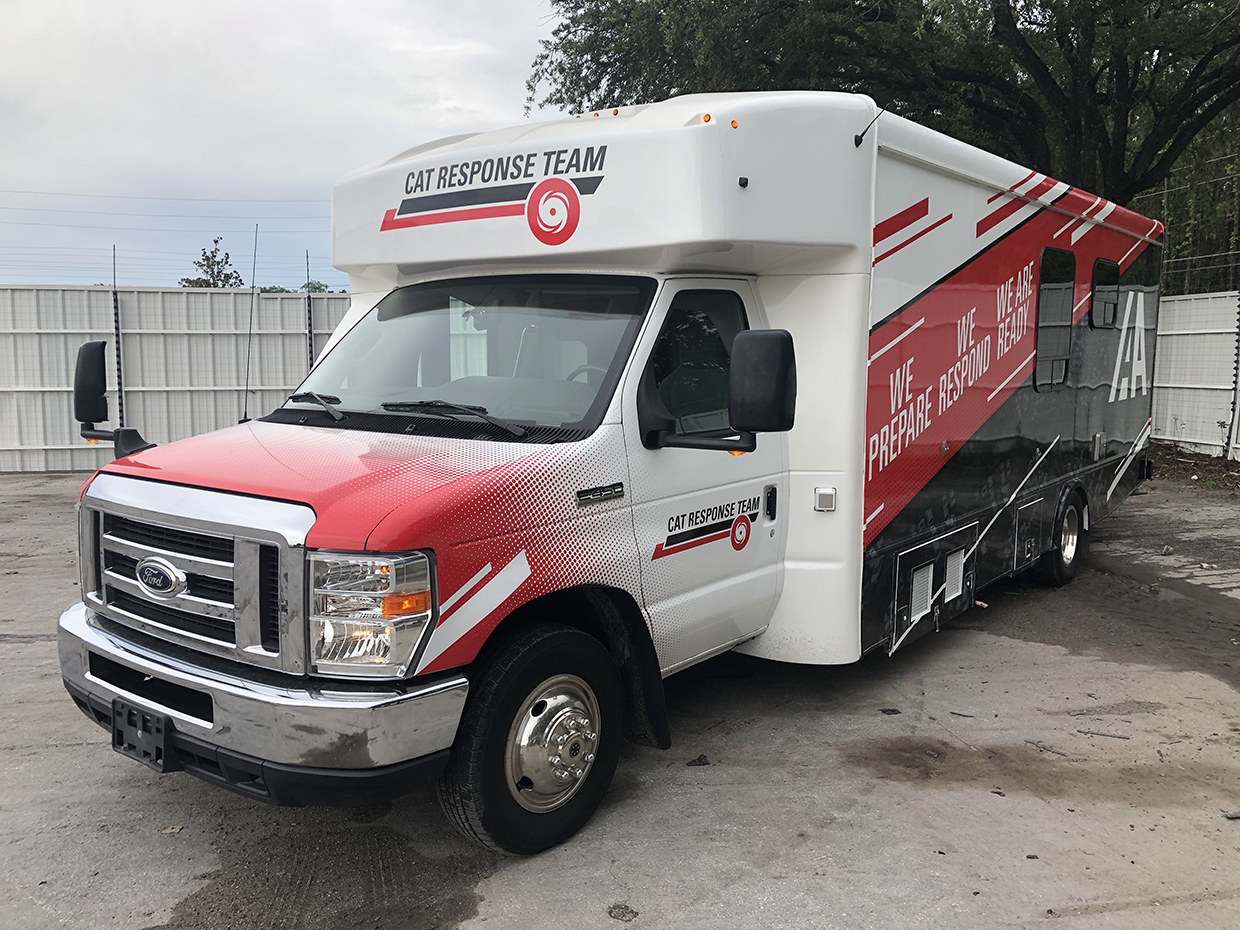
Client Support & Communication
Weather events can create a dramatic increase in vehicle volume for IAA. This additional volume then creates a greater need for IAA Title Services. To manage the additional demand, IAA has increased staff working space at its title centers in catastrophe prone locations. These centers then can quickly and efficiently bring in additional staff from across the IAA organization and immediately get to work. IAA’s suite of services, including IAA Title Direct™, IAA Title Procurement™, and IAA Title Solutions™ can dramatically reduce the cost and cycle time associated with the titling process. The value of these services is particularly critical after the influx of vehicles from a catastrophic event.
Throughout each CAT event, IAA makes customer and employee communication a priority. When tracking a storm, IAA summarizes storm conditions, movement and speed, and provides up-to-date information regarding our catastrophe response. Once landfall is certain, communication frequency increases to provide essential information about storage locations, staffing, towing and logistics, equipment, human resources, area accessibility and local municipality details. IAA also provides dynamic information on its catastrophe response website page – accessible anytime, anywhere to our clients.

Each catastrophe communication sent to our clients takes into consideration the following areas:
Account Management/Customer Support
Human Resources
Marketing/Communications
Operations on the ground
Procurement
Real Estate
Safety/Security
Transportation
Travel Coordination
IAA Operational Execution | Competitive Advantages
IAA has consistently delivered the industry’s leading CAT service and response in all events that have occurred since Hurricane Sandy in 2012.
IAA leads the industry in understanding and meeting customer needs around CAT events. We are continually seeking customer input before, during and after a weather catastrophe. We understand that each customer and event is unique and take a customer-focused approach in everything we do.
IAA is a learning organization and is constantly working to grow from previous events. Our continuous improvement mindset means our customers benefit from every CAT-related experience the organization has managed. That helps improve every aspect of our industry-leading CAT response, increasing the customer’s efficiency, safety, proceeds, and satisfaction.
The entire IAA organization understands the critical importance of treating our customer’s customer as our own [as if they were our own]. IAA’s Account Management Team ensures every provider’s customer receives fast, courteous treatment from across the organization. The high degree of expertise and experience found in CAT Response Team members support IAA’s superior customer focus.
IAA’s personnel are a significant differentiator in its CAT response. They are highly trained, highly experienced CAT professionals who are dedicated and passionate about meeting customers’ needs.
Operational Execution alone cannot manage a catastrophe. IAA’s Catastrophe Response Strategy consists of four components, including Operational Execution, Transportation and Logistics, Real Estate Capacity and Vehicle Merchandising – an unmatched portfolio of capabilities.
Forward-Looking Statements
Certain statements contained in this release contain forward-looking statements within the meaning of the Private Securities Litigation Reform Act of 1995 and which are subject to certain risks, trends and uncertainties. In particular, statements made in this release that are not historical facts may be forward-looking statements. Words such as "should," "may," "will," "anticipates," "expects," "intends," "plans," "believes," "seeks," "estimates" and similar expressions identify forward- looking statements. Such statements include statements regarding the expected timing and associated benefits with respect to this catastrophe brief on our business and plans regarding our growth strategies and margin expansion plan, and to our customers and company generally. Such statements are based on management’s current expectations, are not guarantees of future performance and are subject to risks and uncertainties that could cause actual results to differ materially from the results projected, expressed or implied by these forward-looking statements. These risks and uncertainties include, but are not limited to: uncertainties regarding COVID-19, and other potential future health crises, including new more contagious and/or vaccine resistant variants, and the impact on the duration and severity of the COVID-19 pandemic and measures intended to reduce its spread, including the availability, rate of public acceptance and efficacy of COVID-19 vaccines; the loss of one or more significant vehicle suppliers or a reduction in significant volume from such suppliers; our ability to meet or exceed customers’ demand and expectations; significant current competition and the introduction of new competitors or other disruptive entrants in our industry; the risk that our facilities lack the capacity to accept additional vehicles and our ability to obtain land or renew/enter into new leases at commercially reasonable rates; our ability to effectively maintain or update information and technology systems; our ability to implement and maintain measures to protect against cyberattacks and comply with applicable privacy and data security requirements; risks associated with online commerce security and credit card fraud; our ability to successfully implement our business strategies or realize expected cost savings and revenue enhancements, including from our margin expansion plan; weather-related and other event beyond our control which may adversely impact operations; failure to attract and retain key personnel, have inadequate succession planning, or manage labor shortages; business development activities, including acquisitions and the integration of acquired businesses, and the risks that the anticipated benefits of any acquisitions may not be fully realized or take longer to realize than expected; our expansion into markets outside the U.S. and the operational, competitive and regulatory risks facing our non-U.S. based operations; our reliance on subhaulers and trucking fleet operations; changes in used-vehicle prices and the volume of damaged and total loss vehicles we purchase; economic conditions, including fuel prices, commodity prices, foreign exchange rates and interest rate fluctuations; trends in new- and used-vehicle sales and incentives; and other risks and uncertainties identified in our filings with the Securities and Exchange Commission (the “SEC”), including under Item 1A “Risk Factors” in our Annual Report on Form 10-K filed with the SEC on February 28, 2022, as such risk factors may be amended, supplemented or superseded from time to time by other reports we file with the SEC, including subsequent Quarterly Reports on Form 10-Q and Annual Reports on Form 10-K. Many of these risk factors are outside of our control, and as such, they involve risks which are not currently known that could cause actual results to differ materially from those discussed or implied herein. The forward-looking statements in this release are made as of the date on which they are made and we do not undertake to update our forward-looking statements.

